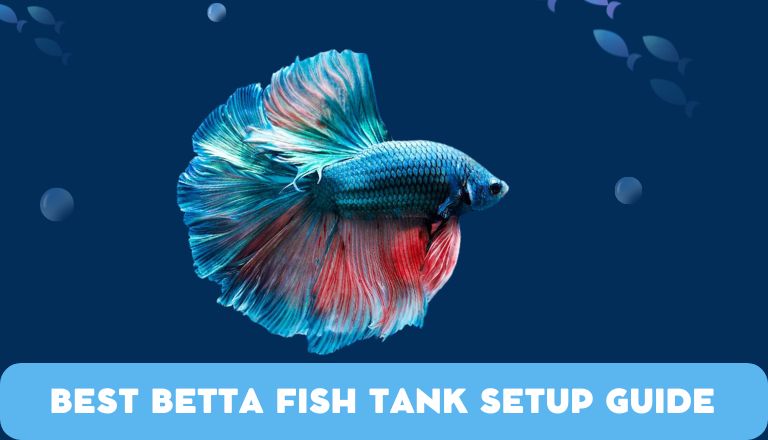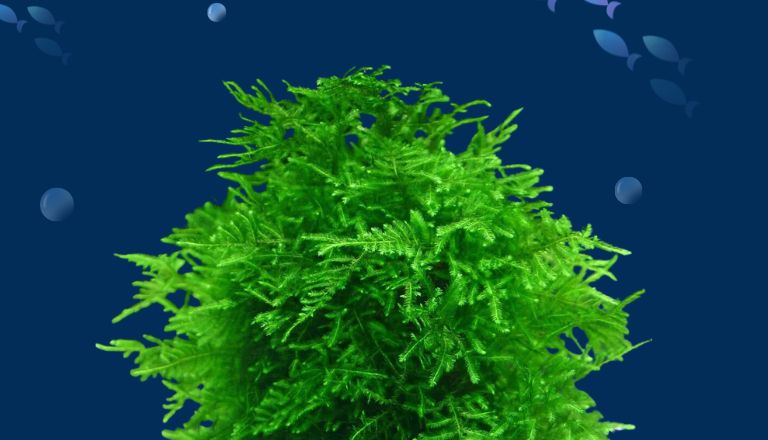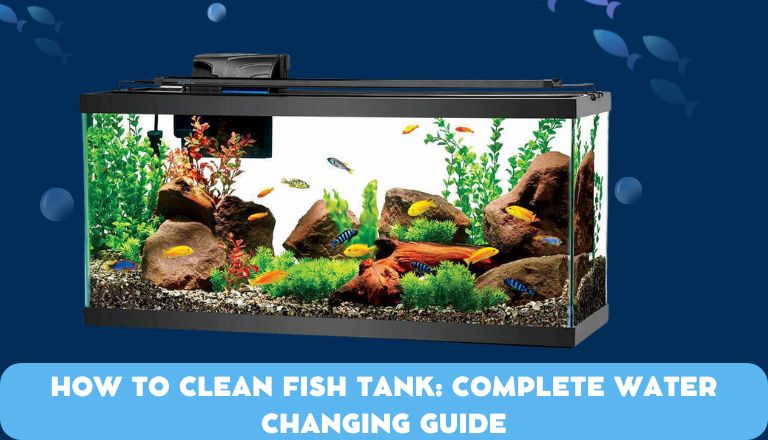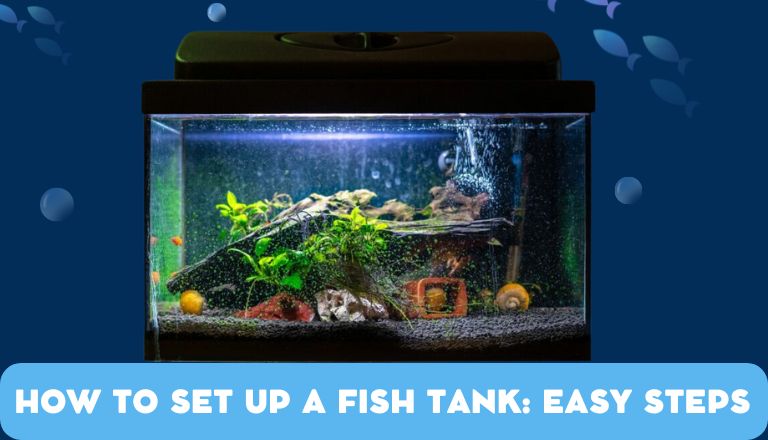Best Betta Fish Tank Setup Guide (Step-by-Step)
Get ready to explore the world of betta fish keeping! Setting up your betta fish tank can be exciting and rewarding. Start by choosing the right tank size and creating a suitable environment for your fish.
Picture a beautifully decorated aquarium with your vibrant betta fish swimming gracefully among plants and decorations. With proper planning, you can create a stunning aquatic landscape that enhances your space and provides a healthy home for your betta. Whether you’re new to fishkeeping or experienced, this guide will give you the knowledge and tools for betta fish tank setup confidently. Let’s start this aquatic journey together!
Step1: Picking Your Tank & Equipment
When it comes to betta fish tank setup, choosing the right equipment is necessary for creating a comfortable and healthy environment for your fish. Selecting the right aquarium size is key, ensure your betta has enough space to swim freely.
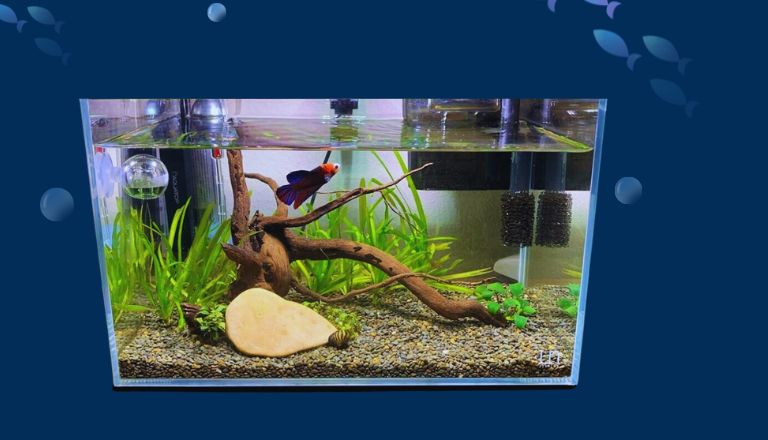
Picking Your Aquarium
Select the right aquarium and equipment to ensure your colorful friend thrives in their new environment. When choosing your tank, select a tank of a minimum size of 5 gallons to provide ample space for your betta to swim and explore. Avoid tiny bowls as they can lead to stress and poor water quality.
Picking your Heater
Select the proper heater for your betta fish tank. Betta fish thrive in warmer water temperatures ranging from 75-80 degrees Fahrenheit. Select a reliable heater with adjustable settings to maintain a stable and comfortable environment for your betta. Regularly monitor the temperature to ensure it remains within the ideal range.
Picking your Filter
When setting up a betta tank, select the right filter to maintain water quality. Choose a filter with adjustable flow settings to cater to the betta’s low activity level.
Find a filter that provides both mechanical and biological filtration to keep the water clean and healthy for your fish.
Picking LED Lighting
LED lighting plays a pivotal role in creating an aesthetically pleasing environment for your betta fish. Opt for LED lights with adjustable brightness to mimic natural day-night cycles, which are essential for the fish’s health and stress levels.
Choose LED lights that emit full-spectrum colors to enhance the vibrancy of your betta’s scales and overall appearance.
Picking Substrate
Select the right substrate for the well-being of your fish. Gravel is a popular choice as it allows for easy cleaning and does not trap debris easily. Some bettas may prefer a softer substrate like sand to mimic their natural habitat.
Picking Plants & Decorations
When selecting plants and decorations for your betta fish tank, provide hiding spots for your fish and leave enough open space for swimming.
Add live plants such as java fern or anubias. They enhance the visual appeal of the tank and also create a more natural environment by maintaining water quality through oxygenation and filtration.
You can add silk or soft plastic plants that can provide shelter without posing any harm to delicate betta fins.
Required Maintenance Equipment
choose the right maintenance equipment to ensure your fish thrives in its environment. Key maintenance equipment includes a gravel vacuum, algae scraper, and water testing kit. The gravel vacuum cleans the substrate by removing debris and waste. An algae scraper is essential for keeping the glass tank walls free of algae which can negatively impact water quality.
A water testing kit is needed to monitor parameters such as ammonia, nitrite, and pH levels to maintain a healthy ecosystem for your betta fish.
Step 2: Betta Fish Tank Setup
Now, we will further discuss the complete steps to betta fish tank setup.
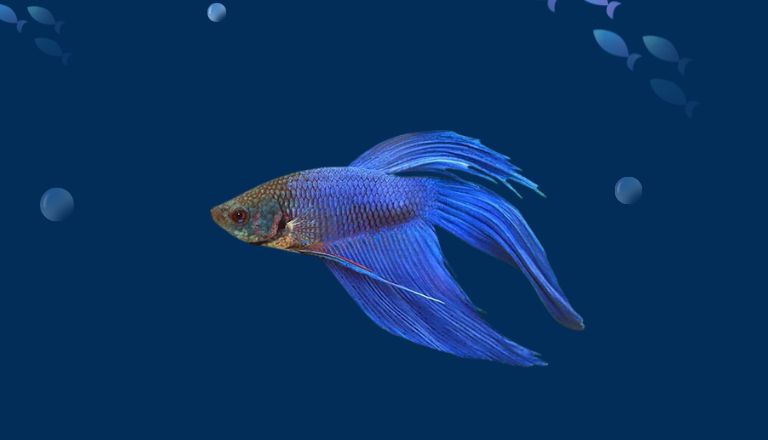
Preparing and Placing the Aquarium
Ensure that the tank is level on a sturdy surface and away from direct sunlight or drafts. Rinse the tank with water to remove any debris before adding gravel or substrate. Carefully fill the tank with conditioned water. Leave enough space at the top to prevent splashing when you add decorations.
Install The Filter
After the tank is filled with water and properly conditioned, it’s time to install your filter. Carefully follow the manufacturer’s instructions for installation. It depends on the type of filter you have chosen, – whether it is an internal or external one.
Ensure that the filter is securely positioned in the tank to prevent any accidents or disruptions. Regularly clean and maintain your filter to keep it functioning efficiently.
Add Decorations & Hardscape
Start by carefully washing any rocks, driftwood, or artificial plants to remove any dust or debris that could harm your Betta. When placing decorations in the tank, create different levels and hiding spots for your Betta to explore and feel safe.
For hardscape elements like rocks or driftwood, make sure they are secure and won’t shift around in the water. Arrange them in a visually appealing way while also leaving plenty of open swimming space for your Betta.
Add Substrate
Before adding the substrate, rinse it thoroughly to remove any dust or debris that could cloud the water. Once rinsed, carefully pour the substrate into the bottom of the tank, creating an even layer that is about 1-2 inches deep.
Partially Fill With Water
Once the substrate is in place, partially fill the tank with water. Use a de-chlorinator to treat the water and ensure it is safe for your fish. Fill it enough to cover the bottom but leave ample space for decorations and plants.
Add Plants
Gently rinse the plants under running water to remove any debris or pests that may be present. Carefully place the plants in the substrate, and make sure the roots are well-covered.
Finish Filling
Once you have added the substrate, decorations, and plants to your betta tank, finish filling it with water. Slowly pour dechlorinated water into the tank, do not disturb the substrate or plants. Fill the tank until it’s about an inch from the top to allow space for water displacement when you add your betta fish and any other accessories.

Turn on Your Filter and Install Your Heater
Turn on your filter to start circulating and cleaning the water. Make sure to set it up according to the manufacturer’s instructions for optimal performance.
Install your heater in the tank to maintain a stable temperature suitable for Betta fish. Position the heater near the filter outlet for even heat distribution throughout the tank. Regularly monitor and adjust the temperature to keep your Betta comfortable and stress-free in their new home.
Perform The Nitrogen Cycle
This process involves establishing beneficial bacteria that will convert harmful ammonia into less toxic substances. To kickstart this cycle, add an ammonia source to the tank, such as fish food or a liquid ammonia solution. The bacteria will feed on this ammonia and begin breaking it down into nitrites and then nitrates.
Monitor the levels of ammonia, nitrites, and nitrates using a water testing kit throughout the cycling process. Once you start seeing a decrease in ammonia and nitrite levels while nitrates are present, this indicates that the nitrogen cycle is complete. This can take anywhere from 2-6 weeks to establish. Allow the nitrogen cycle to fully develop before introducing your betta fish.
Step 3: Picking Betta & How to Acclimate
When it comes to picking your betta fish, look for an active fish, with vibrant colors and fins that are fully extended. Avoid any bettas that appear lethargic or have dull coloring, as this could indicate health issues. Choose a fish that is well-suited for the size of your tank.
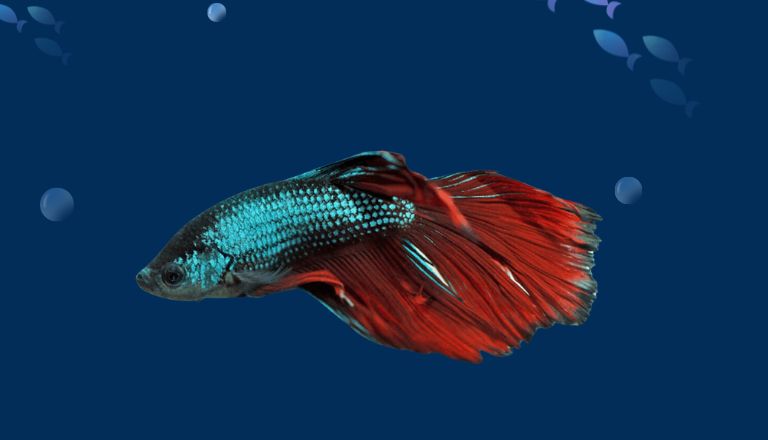
How to Acclimate to New Tank
Once you’ve selected your betta, properly acclimate them to their new environment. This process helps reduce stress and ensures a smooth transition. To acclimate your betta, float their bag in the tank water for about 15-20 minutes. Gradually add small amounts of tank water to the bag every 5-10 minutes until the temperature inside matches that of the tank. Finally, release your betta into the tank gently to avoid causing unnecessary stress.
Conclusion
A betta fish tank setup requires careful consideration of several factors to ensure the health and well-being of your fish. By following this step-by-step guide, you can create an ideal environment for your betta to thrive in. Maintain water quality, provide appropriate decorations and hiding spots, and monitor the temperature and lighting levels regularly.
With proper care and attention to detail, your betta fish can live a long and happy life in their new tank. Take the time to set up your betta fish tank correctly so that you and your fish can enjoy a beautiful and harmonious aquatic environment together.
FAQs
How Long Should The Tank Be Set Up Before Adding Betta Fish?
Set up a betta fish tank for at least 24-48 hours before adding the fish. This allows the water to reach a stable temperature and for any chlorine or other harmful chemicals in the water to dissipate. It also gives time for beneficial bacteria to establish in the tank, which maintains water quality and creates a healthy environment for the betta fish.
How To Set Up A Betta Tank?
Start by selecting an appropriate tank size, add a substrate such as gravel or sand, and decorate the tank with live or silk plants. Maintain water temperature between 75-80°F using a heater. Add a filter to keep the water clean and oxygenated, and include a lid on the tank to prevent your betta from jumping out. Finally, introduce your betta slowly to their new environment, acclimating them to the water temperature before releasing them into the tank.
What Do Betta Fish Like Most In Their Tank?
Betta fish are naturally curious and enjoy having places to hide and feel secure in their surroundings. They thrive in clean, well-maintained tanks with a stable temperature between 75-80 degrees Fahrenheit.
Can I Put Live Plants In My Betta Fish Tank?
Yes, you can put live plants in your betta fish tank! Live plants can be beneficial for both the fish and the overall aquarium environment. They provide hiding spots and resting areas for your betta and reduce stress.

